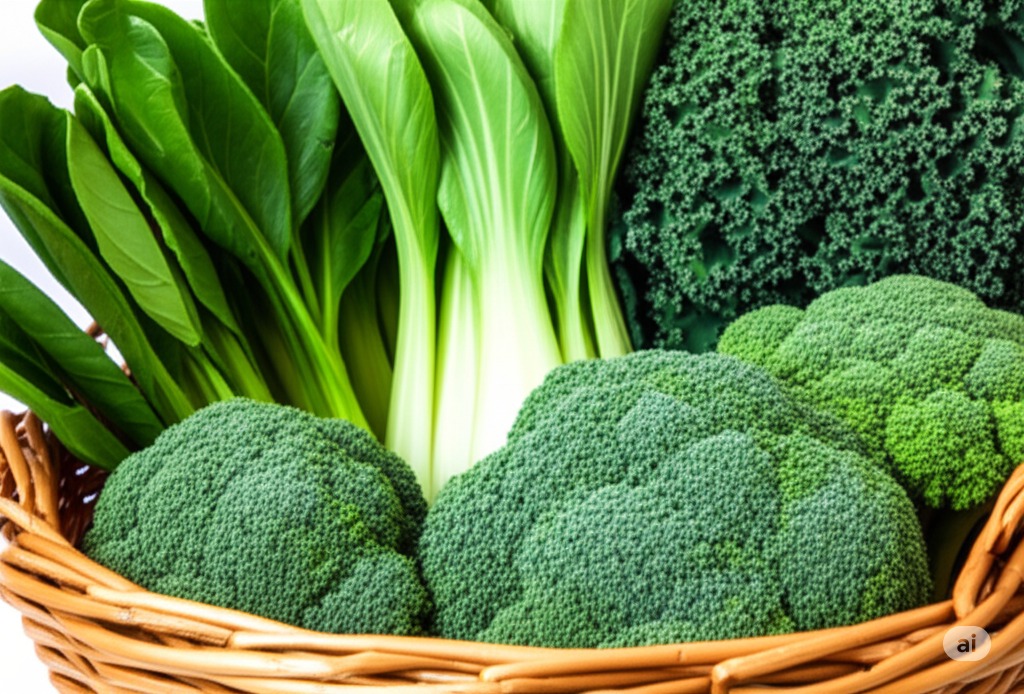Nutritionist Lai Thi Hong Van from Tam Anh General Hospital in Hanoi says that green vegetables, rich in fiber, vitamins, and minerals, are suitable for weight loss if consumed properly. Adults should consume at least 25-30g of fiber daily, equivalent to 200-500g of vegetables, for weight loss. Here are some vegetables that overweight and obese individuals should eat regularly.
Mustard greens: 100g of mustard greens contain about 2g of fiber, contributing to promoting bowel movements and reducing the risk of constipation. Mustard greens are also rich in vitamin K and antioxidants that support cardiovascular health.
Amaranth: 100g of amaranth contains about 2.2g of fiber, and also provides iron, magnesium, and beneficial compounds for people with anemia. The fiber in amaranth helps stabilize blood sugar and promotes natural digestion.
Cauliflower: Antioxidants in cauliflower can protect cells from damage caused by free radicals. This vegetable contains many vitamins, minerals, and the compound sulforaphane, which is beneficial for liver detoxification. Among the vegetables high in fiber, cauliflower has about 2.5g of fiber per 100g, contributing to a feeling of fullness before meals, reducing calorie intake.
Broccoli: This cruciferous vegetable provides about 2.6g of fiber per 100g and is rich in sulforaphane. Broccoli is also rich in vitamins C, A, K, B9, and some minerals like potassium and selenium. They help regulate inflammatory responses, support blood pressure control, and slow down the aging process.
 |
Fiber-rich green vegetables help promote satiety. Image generated by AI |
Bitter melon: Despite its bitter taste, bitter melon provides many compounds that can naturally lower blood sugar. Bitter melon also helps control blood sugar levels and improve insulin sensitivity. Regularly eating bitter melon helps cool the liver, increases satiety, and thus improves weight loss.
Eggplant: Thanks to its significant insoluble fiber content, eggplant helps control sugar absorption after meals. 100g of eggplant contains about 3g of fiber and is rich in anthocyanins in the skin, which have strong antioxidant properties.
Radish: A 100g serving of radish provides about 2.8g of fiber. It also contains betaine, a compound that supports liver function and reduces homocysteine in the blood. In addition to improving digestion, this root vegetable can also enhance blood circulation and reduce the risk of chronic inflammation. White radish is high in crude fiber and natural enzymes, has diuretic properties, and reduces bloating.
 |
Nutritionist Hong Van advises a patient on their diet. Photo illustration: Tam Anh General Hospital |
Beetroot: 100g of beetroot contains about 2.6g of fiber, along with natural nitrates that help enhance circulation and regulate blood pressure. The insoluble fiber in beetroot also helps eliminate toxins through the digestive system and promotes beneficial bacteria. The betalain content can reduce inflammation and protect cells from oxidative damage - factors that support fat reduction and weight loss.
Carrots: In addition to helping regulate blood sugar and slowing down starch digestion, carrots also protect eyesight and boost resistance. Each 100g serving of carrots contains over 2.8g of fiber. Regular consumption can reduce oxidative stress and improve skin health from within.
Mai Anh
| Readers can submit questions about endocrine diseases here for doctors to answer. |












